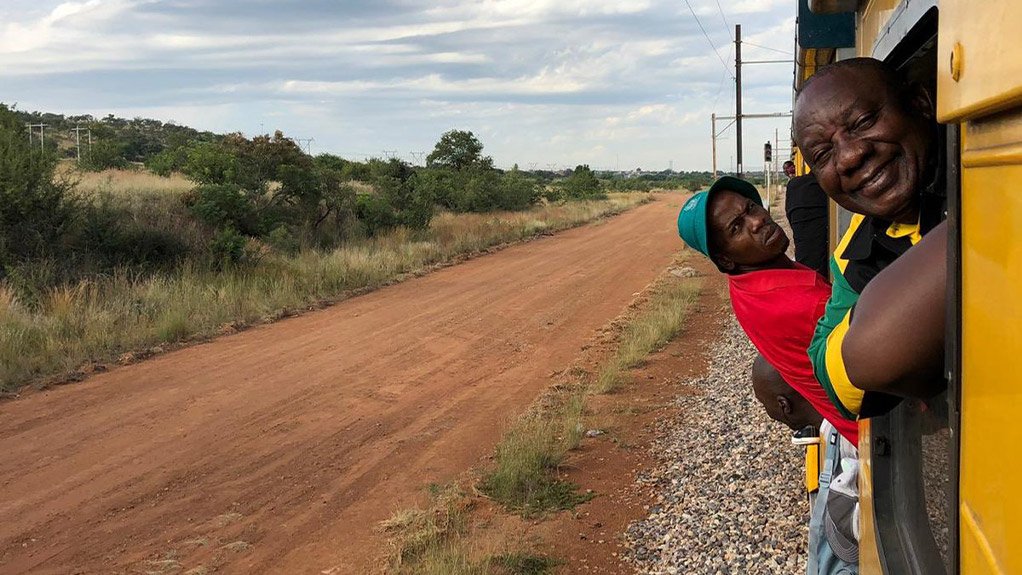The seventh administration aims to push rail as the “backbone of transport” in the country, with President Cyril Ramaphosa urging that rail lines transport at least 250-million tonnes of freight a year by 2029.
With Transnet set to finalise its Network Statement by year-end, Ramaphosa noted that this would help increase the volume of goods transported by rail, while also allowing access to third-party operators on the State’s rail network.
“The efficient, safe and affordable movement of people and goods around the country is essential for economic growth and jobs. Goods that are produced by our workers need to move from mines, factories and farms to our country’s markets and international markets through our ports. People need to be transported to workplaces, clinics, hospitals and schools. When our transport system works well, then the cost of doing business is lowered and our country’s products and services are more competitive,” Ramaphosa stated, as the country celebrates Transport month in October.
In marking the progress made in the rail sector, he pointed to the collaboration between government, business and labour to increase freight volumes on the rail network and said the National Logistics Crisis Committee’s Freight Logistics Roadmap would assist with security, operational improvement and capital investment.
In public transport, the President noted the Passenger Rail Agency of South Africa’s achievement in the restoration of 31 of 40 priority rail corridors back to operation.
He pointed to a nearly three-fold increase in the use of public trains since last year, with 40-million passengers accounted for in March.
He acknowledged a lack of maintenance, and vandalism, of the public rail sector as hindrances to providing quality transport to South Africans, and assured that restoring public rail transport could play a significant role in reducing the cost of living for the poor.
Further, the National Rail Masterplan touted for completion by the end of 2025, aims to introduce high-speed rail across cities. But Ramaphosa acknowledged the need for considerable investment and new technology to see this come to fruition.
“The government alone will not be able to carry the scale of the investment needed. That is why we are working to mobilise private-sector investment in rail and port operations, while ensuring that the infrastructure remains State-owned,” he explained, adding that public transport integration was also being studied, to allow passengers to seamlessly move between destinations.
With South Africa aiming for zero emissions by 2050, Ramaphosa said rail would also help in achieving environmentally sustainable transport methods.
“We are now on the right track towards a public transport system that is safer, more efficient and more affordable – and that supports the growth of an inclusive economy, reduces poverty and creates employment,” he said.
EMAIL THIS ARTICLE SAVE THIS ARTICLE ARTICLE ENQUIRY
To subscribe email subscriptions@creamermedia.co.za or click here
To advertise email advertising@creamermedia.co.za or click here











